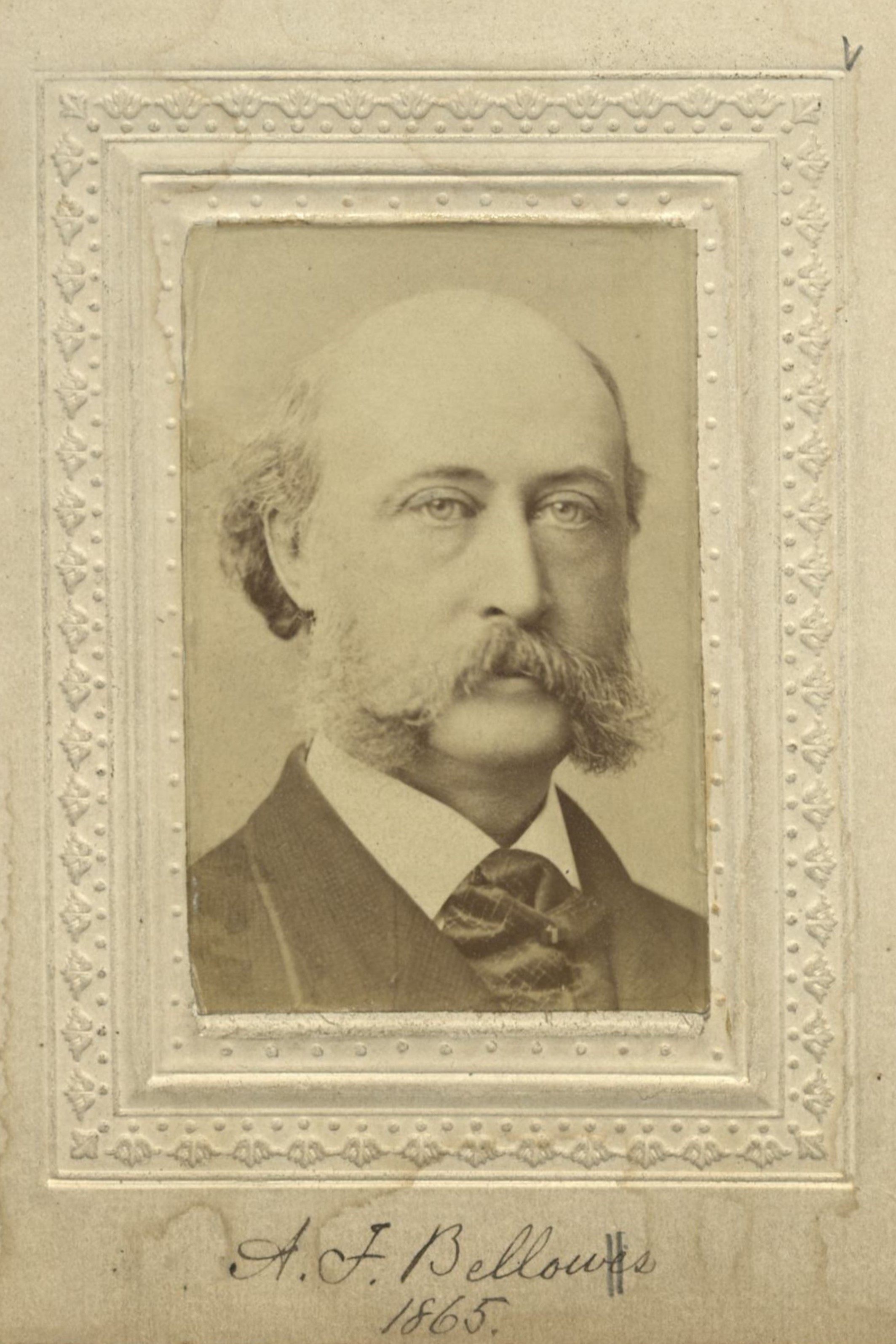Member Directory,
1847 - 1922
Frederic E. Church
Artist
Centurion, 1850–1900
Henry Peters Gray
Hartford, Connecticut
New York (Manhattan), New York
Age twenty-three
Hartford, Connecticut

Archivist’s Notes
Second vice president of the Century Association, 1871–1872
Century Memorials
Frederick E. Church [sic: Frederic E. Church] was in his time one of the best known and most distinguished landscape artists in America. A pupil of Thomas Cole, he came early into notice, and the beauty of his work, its careful study, color and originality, attracted immediate attention, and his canvases soon commanded the highest prices ever obtained by a native artist.
It was when art was comparatively in its infancy here that his “Niagara,” “Heart of the Andes,” and “Icebergs” were the talk of the town, and the whole city flocked to their exhibition with the same eagerness that is shown now on a brilliant opera night or the first appearance of a new star. That they are still admired after a lapse of nearly fifty years, when other standards of taste have been established, and familiarity with the best art in the world is a characteristic of Americans, is an evidence of their original merit and enduring value. He was always a careful student of nature, which he loved, and he made excursions to South America, the West Indies, the coast of Labrador, the Holy Land and other far distant regions in the pursuit of his subjects and for a careful study of them. His tendency was toward extraordinary, brilliant, foreign and Turneresque effects, rather than the simple, every day, though no less artistic, subjects employed by the best artists of the European and of the present American schools—the rainbow of Niagara and the iceberg, rather than the quiet river or lake; the snow-capped peaks and the tropical forests of South America, rather than the barnyard, the tilled field, or the village street; the solemn dignity of the Parthenon, rather than the peasant’s homely cottage; and the public taste at that time agreed with him. A long time has passed since any canvases have come from his brush, but he spent his declining years at his beautiful home in the Catskills, enjoying the well-earned repose which his success brought him. He was made an Academician of the Academy of Design in 1849, and since 1850 had been a member of The Century, where his memory will always be cherished and honored.
Henry E. Howland
1901 Century Association Yearbook
Church, born in Hartford, Connecticut, developed an early interest in art and by the age of 16, he was studying drawing and painting with Thomas Cole. By 20, he had been shown in the National Academy of Design annual exhibition; the following year, he sold his first major oil, to Hartford’s Wadsworth Atheneum. In 1848 he was elected as the youngest Associate of the National Academy of Design and was promoted to Academician the following year. That same year he took a studio in New York City, accepted William James Stillman as his first pupil, and turned out a number of pictures, all of which sold well.
Church settled into his own pattern of travel, hiking, and sketching from spring through autumn, followed by winter in New York painting. In April 1853, Church and his friend Cyrus Field, who laid the first trans-Atlantic cable in 1858, journeyed through Colombia and Ecuador. In 1855, his South American pictures were shown to great acclaim, and for the next decade he devoted a great part of his attention to those subjects. But it was his Niagara, completed in 1857, and Heart of the Andes, now in the collection of the Metropolitan, in 1859, that guaranteed him the role of America’s most famous painter.
In 1860, Church married Isabel Carnes and began to devote his creative energies increasingly to gentleman farming and to the designing of Olana, his “Persian” villa at Hudson, New York, a seemingly endless undertaking. The original architect of Olana was Richard Morris Hunt, but after an 18-month European and Near East trip, Church worked with architect Calvert Vaux. From the 1870s until his death Church was afflicted with painful rheumatism of the right arm, which limited his work on major pictures, though he still managed to produce a few large impressive canvases. He died in 1900, a Centurion for 50 years.
James Charlton
“Centurions on Stamps,” Part I (Exhibition, 2010)
Related Members
Member Directory Home-
 Edward M. ArchibaldDiplomat/Canadian PoliticianCenturion, 1870–1884
Edward M. ArchibaldDiplomat/Canadian PoliticianCenturion, 1870–1884 -
 Albert F. BellowsArtistCenturion, 1865–1883
Albert F. BellowsArtistCenturion, 1865–1883 -
 Henry Peters GrayArtistCenturion, 1847–1877
Henry Peters GrayArtistCenturion, 1847–1877 -
 George B. HibbardLawyerCenturion, 1865–1899
George B. HibbardLawyerCenturion, 1865–1899 -
 Robert Hoe IIIManufacturer (Printing Press)Centurion, 1877–1909
Robert Hoe IIIManufacturer (Printing Press)Centurion, 1877–1909 -
 R. W. HubbardArtistCenturion, 1865–1888
R. W. HubbardArtistCenturion, 1865–1888 -
 Horace W. RobbinsArtist/LawyerCenturion, 1863–1904
Horace W. RobbinsArtist/LawyerCenturion, 1863–1904 -
 Samuel Worcester RowseIllustrator/LithographerCenturion, 1858–1860s
Samuel Worcester RowseIllustrator/LithographerCenturion, 1858–1860s





